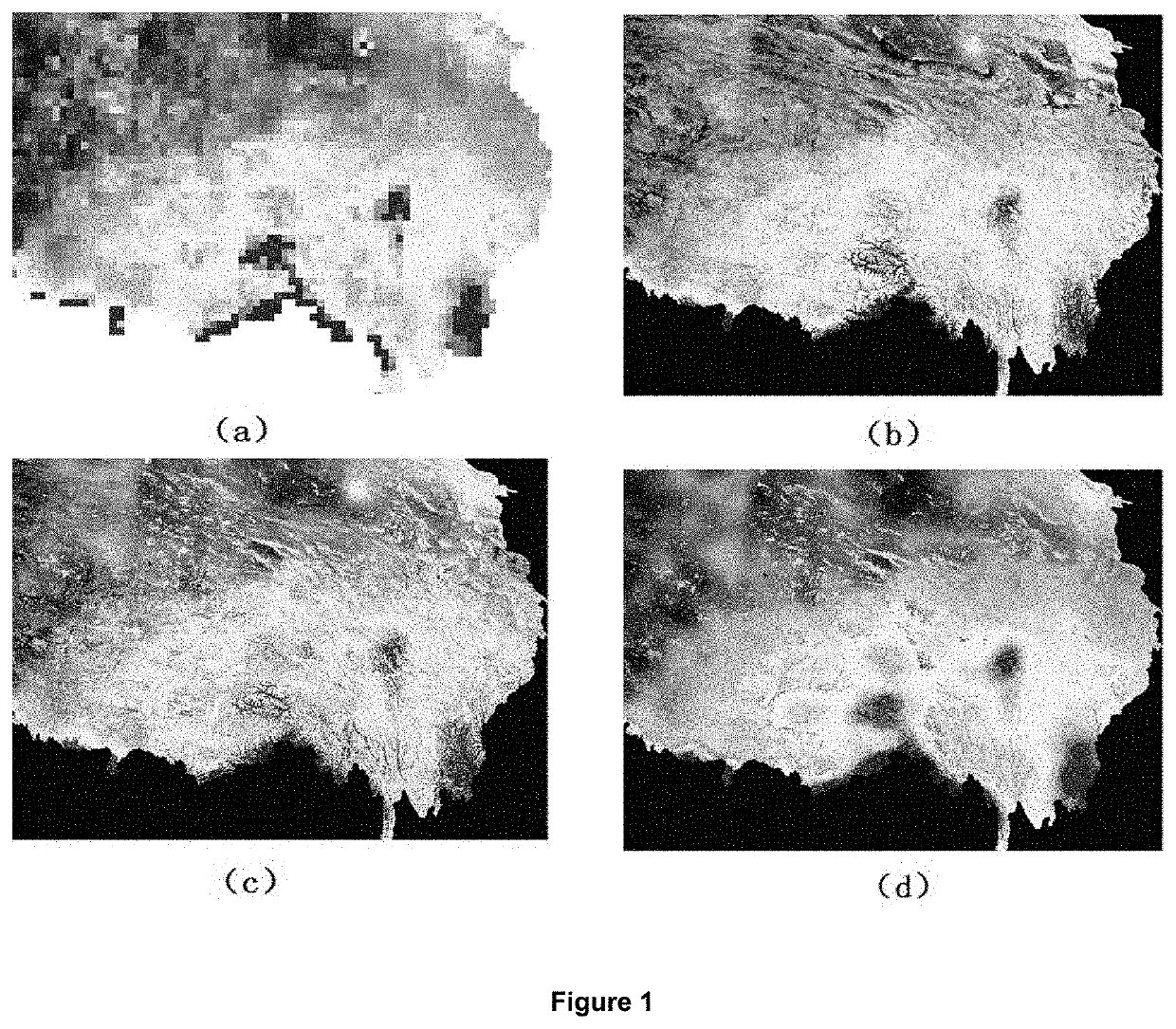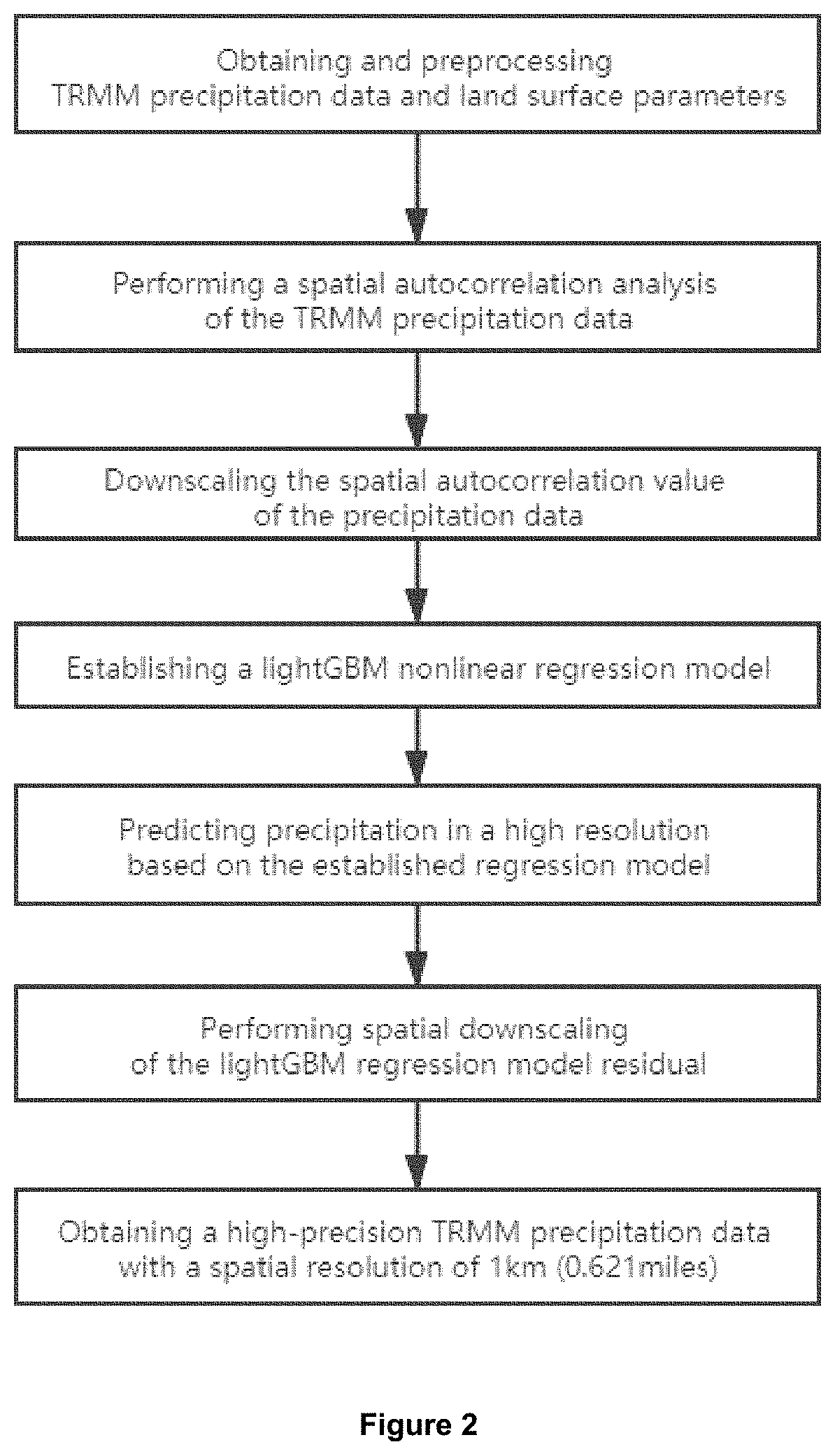Spatial autocorrelation machine learning-based downscaling method and system of satellite precipitation data
a machine learning and satellite technology, applied in the field of satellite remote sensing precipitation data downscaling method, system and terminal considering spatial autocorrelation, can solve the problems of loss of spatial information of precipitation data, difficulty in reflecting the spatial details of a regional precipitation, and still two shortages, so as to improve the spatial resolution and accuracy of trmm and accurate precipitation prediction of a complex area
- Summary
- Abstract
- Description
- Claims
- Application Information
AI Technical Summary
Benefits of technology
Problems solved by technology
Method used
Image
Examples
Embodiment Construction
[0086]The embodiments of the invention are described in detail as following. The embodiments of the invention are implemented on the premise of the technical scheme of the invention, and the detailed embodiments and the specific operation process are given. It should be pointed out that a person skilled in the art can make several deformations and improvements without breaking away from the idea of the present invention, which belong to the protection scope of the present invention.
[0087]The embodiment of the present invention provides a machine learning downscaling method for satellite remote sensing precipitation data considering spatial autocorrelation. The method firstly performs a spatial autocorrelation analysis of a TRMM monthly precipitation data of 25 km (15.534 miles) to calculate a spatial autocorrelation values and obtain a spatial autocorrelation values of the precipitation data of 1 km (0.621 miles) by using an area to point Kriging interpolation method to interpolate;...
PUM
 Login to View More
Login to View More Abstract
Description
Claims
Application Information
 Login to View More
Login to View More - R&D
- Intellectual Property
- Life Sciences
- Materials
- Tech Scout
- Unparalleled Data Quality
- Higher Quality Content
- 60% Fewer Hallucinations
Browse by: Latest US Patents, China's latest patents, Technical Efficacy Thesaurus, Application Domain, Technology Topic, Popular Technical Reports.
© 2025 PatSnap. All rights reserved.Legal|Privacy policy|Modern Slavery Act Transparency Statement|Sitemap|About US| Contact US: help@patsnap.com


